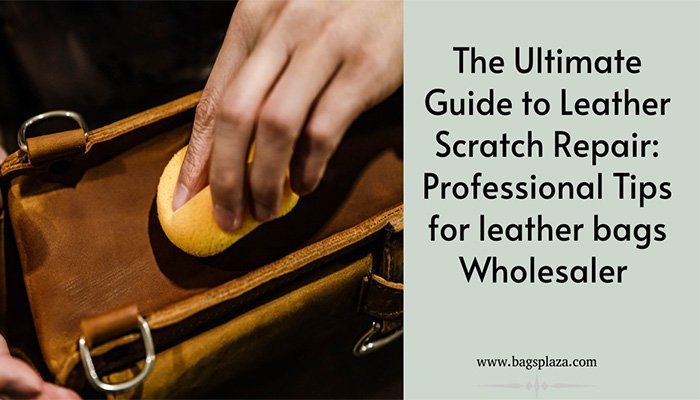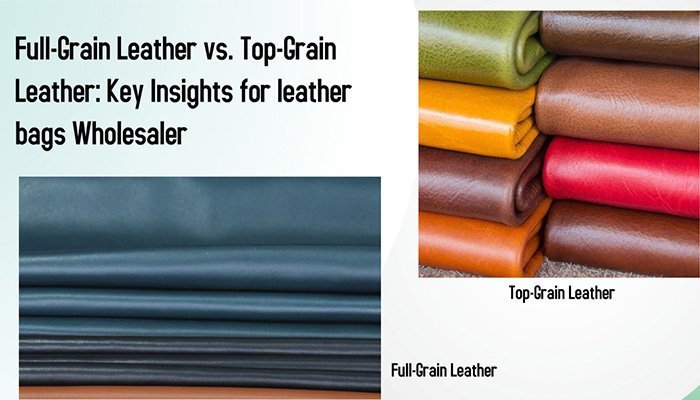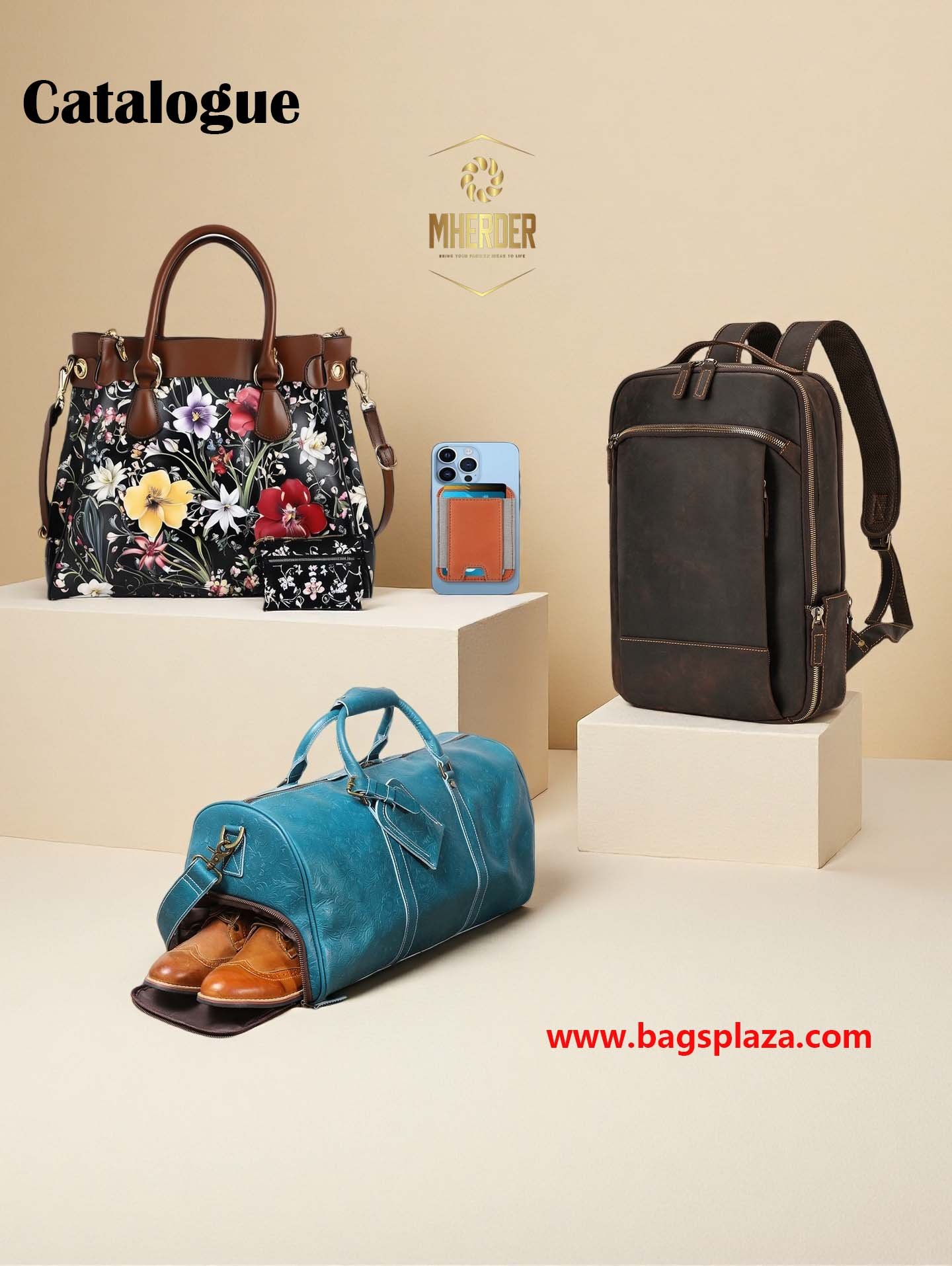Introduction
Overview of the Custom Wallet Market
The custom wallet market is experiencing significant growth, driven by increasing consumer demand for personalized and unique accessories. Importers, brand owners, Amazon big buyers, retailers, wholesalers, and other B-side customers are constantly seeking high-quality, customizable wallets to meet diverse market needs. Sourcing the right factors is crucial for successful production, ensuring that the final product not only meets quality standards but also aligns with brand identity and customer expectations.
1. Material Quality
1.1 Types of Materials
Leather vs. Synthetic Options
When sourcing custom wallets, choosing the right material is fundamental. Leather is a classic choice known for its durability and premium feel. Genuine leather ages beautifully, developing a unique patina over time. However, it can be more expensive and requires regular maintenance. On the other hand, synthetic materials like polyurethane or vegan leather offer a cruelty-free and often more affordable alternative. While they may not match the longevity of genuine leather, advancements in synthetic materials have significantly improved their quality and appearance.
Alternative Materials
Exploring eco-friendly and innovative materials can set your wallets apart in a competitive market. Materials such as recycled fabrics, cork, and even sustainable plant-based leathers are gaining popularity. These options not only appeal to environmentally conscious consumers but also offer unique textures and aesthetics that can enhance product differentiation.
1.2 Durability and Longevity
Assessing Wear and Tear Resistance
Choosing materials that withstand daily use is essential for maintaining product quality and customer satisfaction. Leather wallets, known for their strength, can endure years of use if properly maintained. Synthetic alternatives, while generally less durable, can be treated to resist scratches and water damage, extending their lifespan.
Maintenance Requirements
Different materials have varying maintenance needs. Leather requires regular cleaning and conditioning to prevent drying and cracking. Synthetic materials are typically easier to maintain, often only needing a wipe with a damp cloth. Understanding these requirements helps in selecting materials that align with your customer’s lifestyle and care preferences.
1.3 Aesthetic Considerations
Color and Texture Variety
The availability of different finishes and textures allows for greater customization and appeal. Leather offers a wide range of colors and grain patterns, while synthetic materials can mimic various textures, from smooth to pebbled surfaces. Offering diverse aesthetic options can cater to different tastes and market segments.
Customization Options
Material choice directly influences design flexibility. For instance, certain materials are more suitable for embossing or engraving, allowing for personalized touches such as initials or logos. Selecting materials that support your desired customization features ensures that the final product meets both functional and aesthetic requirements.
2. Supplier Reliability
2.1 Supplier Reputation
Evaluating Past Performance
A supplier’s reputation is a critical factor in ensuring consistent quality and timely delivery. Reviewing testimonials, case studies, and client feedback can provide insights into a supplier’s reliability and performance history. Partnering with reputable suppliers minimizes risks associated with production delays and quality issues.
Industry Certifications
Relevant certifications, such as ISO 9001 for quality management or LEED for environmental standards, indicate a supplier’s commitment to maintaining high operational standards9. These certifications can serve as a benchmark for evaluating potential suppliers’ reliability and adherence to industry best practices.
2.2 Production Capacity
Scalability for Large Orders
Ensuring that suppliers can handle varying order sizes is essential, especially for businesses anticipating growth or seasonal spikes in demand. Assessing a supplier’s production capacity and scalability ensures that they can meet your requirements without compromising quality or delivery timelines.
Lead Times and Delivery Schedules
Timely production and delivery are crucial for maintaining inventory levels and meeting customer expectations. Clear communication about lead times and establishing reliable delivery schedules help in planning and avoiding potential disruptions in the supply chain.
2.3 Communication and Support
Responsive Communication Channels
Effective and timely communication with suppliers facilitates smoother collaboration and problem-solving. Ensuring that your supplier has responsive communication channels, such as dedicated account managers or support teams, can enhance the overall sourcing experience.
After-Sales Support
Availability of support post-purchase is important for addressing any issues that may arise after the products have been delivered. Reliable after-sales support ensures that any defects or discrepancies are promptly resolved, maintaining customer satisfaction and trust.
3. Cost Management
3.1 Budget Planning
Setting a Realistic Budget
Budgeting for custom wallets involves considering various factors, including materials, labor, shipping, and potential customization costs. Setting a realistic budget ensures that you can allocate resources effectively without compromising on quality or other essential aspects.
Cost Breakdown
Understanding the costs involved in different components of wallet production helps in making informed decisions. This includes material costs, manufacturing expenses, labor, shipping, and any additional costs related to customization or packaging. A detailed cost breakdown aids in identifying areas where savings can be made without affecting the overall quality.
3.2 Cost vs. Quality Balance
Prioritizing Expenditure
Balancing cost and quality is crucial for maximizing profitability while maintaining product standards. Deciding where to allocate more budget, such as investing in higher-quality materials or advanced manufacturing techniques, can enhance the final product’s appeal and durability.
Avoiding Hidden Costs
Identifying and mitigating unexpected expenses, such as customs duties, shipping delays, or additional customization fees, helps in maintaining budget integrity17. Clear contracts and thorough supplier agreements can prevent hidden costs from impacting your overall budget.
3.3 Negotiating Terms
Price Negotiation Strategies
Negotiating better prices with suppliers involves understanding market rates, leveraging bulk orders, and building long-term relationships. Effective negotiation can lead to cost savings and more favorable terms, enhancing overall profitability.
Payment Terms and Conditions
Understanding favorable payment options, such as staggered payments or credit terms, can improve cash flow management. Clear agreements on payment terms help in maintaining a healthy financial relationship with your suppliers.
4. Design Customization
4.1 Design Flexibility
Range of Customization Options
Exploring different design elements that can be customized, such as color, texture, size, and additional features, allows for creating unique products that stand out in the market20. A wide range of customization options caters to diverse customer preferences and enhances product appeal.
Collaborative Design Process
Working closely with suppliers to achieve desired designs fosters innovation and ensures that the final product aligns with your brand vision. A collaborative approach can lead to the development of unique features and functionalities that differentiate your wallets from competitors.
4.2 Prototyping and Sampling
Importance of Samples
Reviewing samples before mass production allows you to assess the quality, functionality, and aesthetic appeal of the wallets. This step helps in identifying and addressing any issues early in the production process, ensuring that the final product meets your standards.
Iterative Design Improvements
Refining designs based on prototype feedback enables continuous improvement and optimization of the product. An iterative approach ensures that the wallets evolve to better meet market demands and customer expectations.
4.3 Branding and Personalization

Incorporating Brand Identity
Ensuring that wallets reflect your brand’s image and values strengthens brand recognition and loyalty. Custom branding elements, such as logos, color schemes, and unique design features, enhance the product’s association with your brand.
Personalization Features
Offering options for adding personal touches like initials or logos caters to the growing demand for personalized products. Personalization increases the product’s perceived value and can attract a broader customer base.
5. Sustainability Considerations
5.1 Eco-friendly Materials
Sustainable Material Options
Choosing materials with a lower environmental impact, such as recycled fabrics or sustainably sourced leather, aligns with the increasing consumer preference for eco-friendly products. Sustainable materials not only reduce environmental footprint but also enhance brand reputation.
Recycled and Upcycled Materials
Using recycled or upcycled materials in wallet production offers benefits such as reduced waste and lower resource consumption. These materials can also provide unique textures and stories that resonate with environmentally conscious consumers.
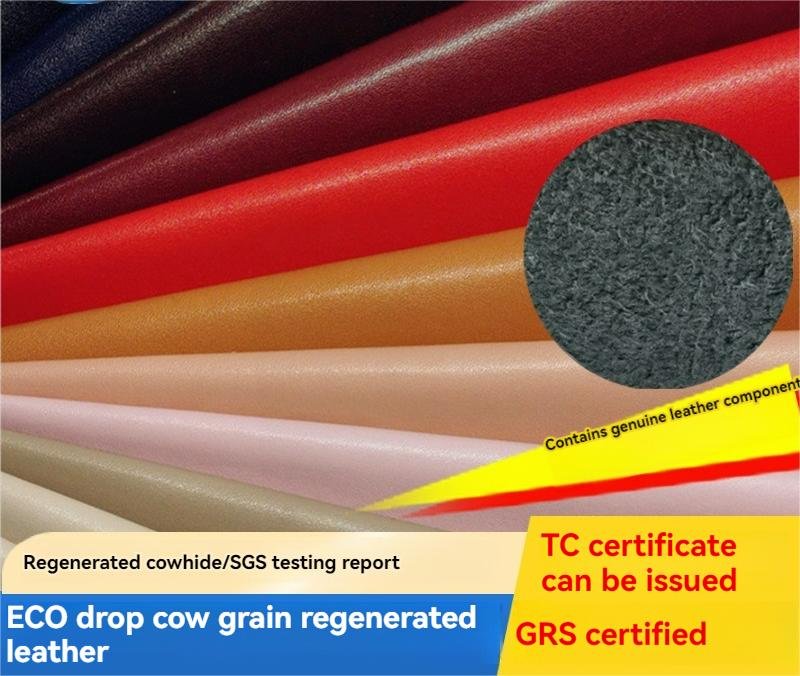
5.2 Ethical Manufacturing Practices
Fair Labor Practices
Ensuring suppliers adhere to ethical labor standards, including fair wages and safe working conditions, is essential for maintaining corporate social responsibility. Ethical manufacturing practices enhance brand integrity and customer trust.
Environmental Impact
Minimizing the environmental footprint of production processes, through measures like reducing waste, conserving energy, and using eco-friendly packaging, contributes to sustainable business operations. These practices appeal to environmentally aware customers and can differentiate your brand in the market.
5.3 Certifications and Standards
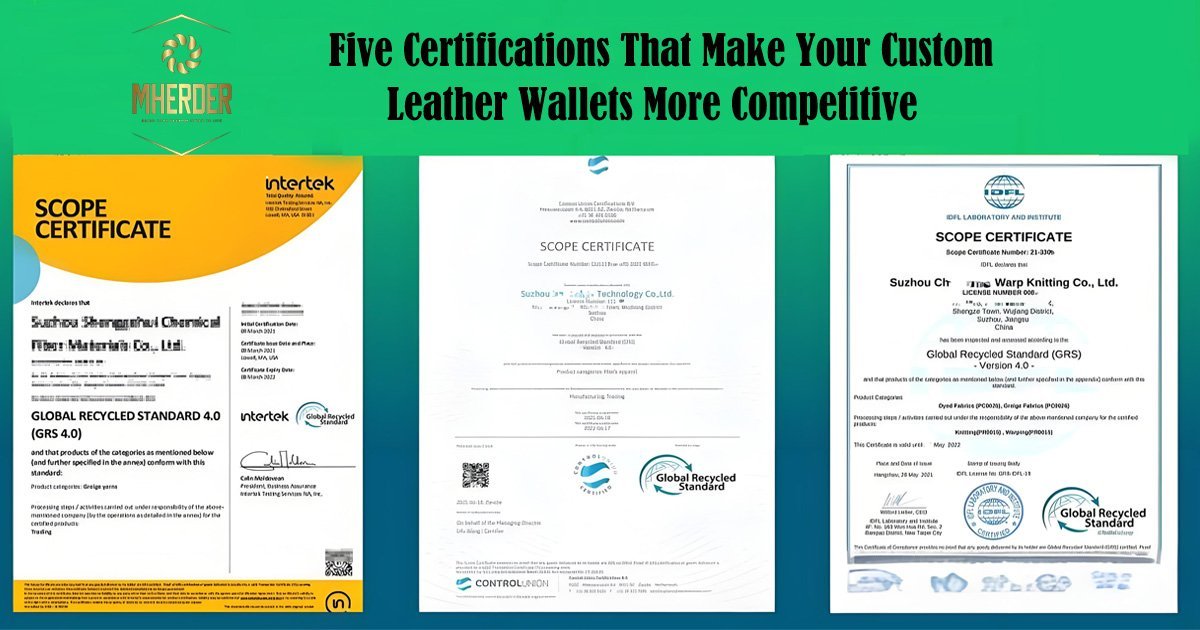
Relevant Sustainability Certifications
Identifying certifications that guarantee sustainable practices, such as Fair Trade, Global Organic Textile Standard (GOTS), or ISO 14001, assures your products’ environmental and ethical standards. These certifications can enhance your brand’s credibility and appeal to conscientious consumers.
Compliance with Environmental Regulations
Ensuring adherence to local and international environmental laws is crucial for avoiding legal issues and maintaining market access. Compliance demonstrates your commitment to sustainable practices and responsible sourcing.
6. Technical Advanced
6.1 Innovative Features
Smart Wallet Technologies
Incorporating features like RFID blocking, GPS tracking, or built-in chargers can add significant value to your wallets. These smart technologies cater to modern consumer needs for security and convenience, setting your products apart from traditional wallets.
Advanced Manufacturing Techniques
Utilizing technologies such as 3D printing or laser cutting ensures precision and allows for intricate designs. Advanced manufacturing techniques enhance product quality and enable the creation of complex features that appeal to tech-savvy consumers.
6.2 Quality Control and Testing
Implementing Robust Quality Assurance
Techniques for ensuring each wallet meets quality standards include regular inspections, material testing, and adherence to strict production protocols. Robust quality assurance processes prevent defects and maintain consistent product quality.
Testing for Functionality and Durability
Methods to test the practical aspects of wallet design and materials, such as drop tests, wear simulations, and usability assessments, ensure that the wallets perform well under real-world conditions. Functionality and durability testing enhance product reliability and customer satisfaction.
6.3 Integration with Modern Trends
Adapting to Market Demands
Keeping up with trends like minimalist designs or multifunctional wallets ensures that your products remain relevant and appealing. Adapting to market demands allows you to capitalize on emerging consumer preferences and stay competitive.
Leveraging Technology for Customization
Using software and tools to enhance the customization process, such as online design platforms or augmented reality previews, improves the customer experience and facilitates personalized product creation. Leveraging technology can streamline the customization process and increase customer engagement.
7. Patent Issues

7.1 Intellectual Property Rights
Protecting Your Designs
Securing intellectual property for custom wallets is crucial to prevent unauthorized use and ensure exclusive rights to your unique designs. Protecting your designs safeguards your brand’s uniqueness and competitive advantage.
Understanding Patent Laws
An overview of relevant patent laws and how they apply helps in navigating the complexities of intellectual property protection. Understanding patent laws ensures that your designs are legally protected and reduces the risk of infringement.
7.2 Avoiding Patent Infringement
Researching Existing Patents
Conducting thorough patent searches to avoid conflicts with existing patents prevents legal disputes and ensures that your designs are original. This proactive approach minimizes the risk of infringing on others’ intellectual property rights.
Legal Consultation
Seeking legal advice on patent matters ensures that your designs comply with intellectual property laws and that you are aware of your rights and obligations. Legal consultation provides expert guidance in protecting and enforcing your intellectual property.
7.3 Protecting Your Innovations
Registering Patents and Trademarks
Steps to legally protect unique wallet designs include registering patents and trademarks, which provide formal recognition and protection of your intellectual property. Registering patents and trademarks enhances the enforceability of your rights and deters potential infringers.
Enforcement of IP Rights
Strategies for enforcing intellectual property rights against infringers include monitoring the market, taking legal action when necessary, and collaborating with legal professionals to uphold your rights. Effective enforcement ensures that your innovations remain protected and valued.
FAQ
Common Questions About Sourcing Custom Wallets
What is the minimum order quantity for custom wallets?
The minimum order quantity (MOQ) varies by supplier. For instance, Bags Plaza requires a MOQ of 100pcs per shipment, making it accessible for both small and large businesses.
How long does the sourcing and production process take?
The sourcing and production timeline depends on factors like material availability, customization complexity, and order size. Typically, it ranges from a few weeks to a couple of months.
Can I request samples before placing a bulk order?
Yes, most suppliers, including Bags Plaza, offer samples to ensure that the quality and design meet your expectations before committing to a bulk order.
What customization options are typically available?
Customization options often include color selection, material choice, branding elements like logos, and personalized features such as initials or unique design elements.
How do I ensure the sustainability of the materials used?
Choose suppliers that provide eco-friendly materials and hold relevant sustainability certifications. Additionally, inquire about their sourcing practices and environmental impact.
What are the best practices for negotiating with suppliers?
Research market rates, understand your budget constraints, build long-term relationships, and negotiate based on volume and repeat business to secure favorable terms.
How can I protect my wallet designs legally?
Register your designs with appropriate patent and trademark authorities, conduct thorough patent searches, and seek legal advice to ensure your intellectual property is protected.
Troubleshooting and Support
What to do if there are production delays?
Communicate promptly with your supplier to understand the cause of the delay and negotiate revised timelines or alternative solutions to mitigate the impact on your business.
How to handle quality issues with the received products?
Document the quality issues, notify your supplier immediately, and work collaboratively to resolve the problem, whether through replacements, refunds, or corrective actions.
Steps to take if there’s a breach of contract with a supplier
Review the contract terms, seek legal advice, communicate your concerns clearly, and consider alternative suppliers if the issue cannot be resolved amicably.
Conclusion
Recap of Key Factors
Sourcing custom wallets involves careful consideration of material quality, supplier reliability, cost management, design customization, sustainability, technical advancements, and patent issues. Each factor plays a vital role in ensuring that the final product meets quality standards and aligns with your brand’s vision and customer expectations.
Final Recommendations
Partner with reputable suppliers like Bags Plaza that offer a vast selection of designs, customization options, and reliable shipping. Prioritize quality and sustainability to meet market demands, and protect your unique designs through proper intellectual property measures. By addressing these key factors, you can successfully source and produce high-quality custom wallets that resonate with your target customers.
Shopping Guide to Mherder Company (Bags Plaza)
When sourcing custom wallets, partnering with a reliable supplier like Bags Plaza can streamline your procurement process. Here are some of the standout features that make Bags Plaza an excellent choice:
- 3000+ Designs in Stock: A vast collection ensures that you can find the perfect style to match your brand’s identity and customer preferences.
- MOQ: 100pcs per Shipment: With a minimum order quantity of just 100 pieces, Bags Plaza accommodates both small and large businesses, making it accessible for various scales of operation.
- Quick Shipment: Efficient production and shipping processes ensure that your orders are delivered promptly, minimizing delays and keeping your inventory stocked.
- Customization Available: From color selection to personalized branding, Bags Plaza offers extensive customization options to create unique wallets that stand out in the market.
- Affordable Price: Competitive pricing ensures that you can maintain profitability without compromising on quality.
Explore their offerings and discover how Bags Plaza can support your business needs by visiting their official website.
